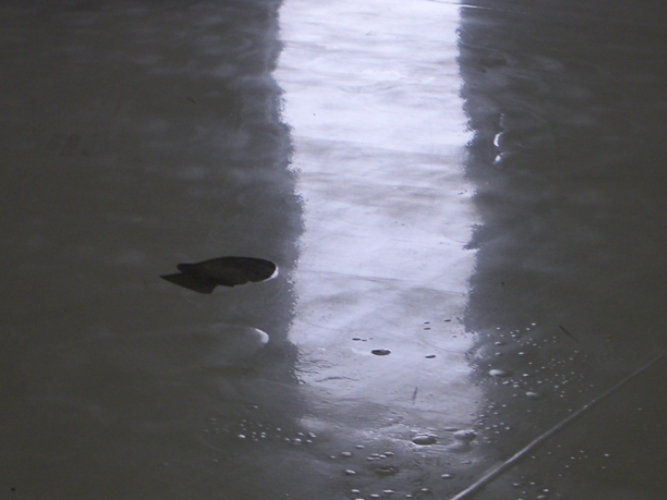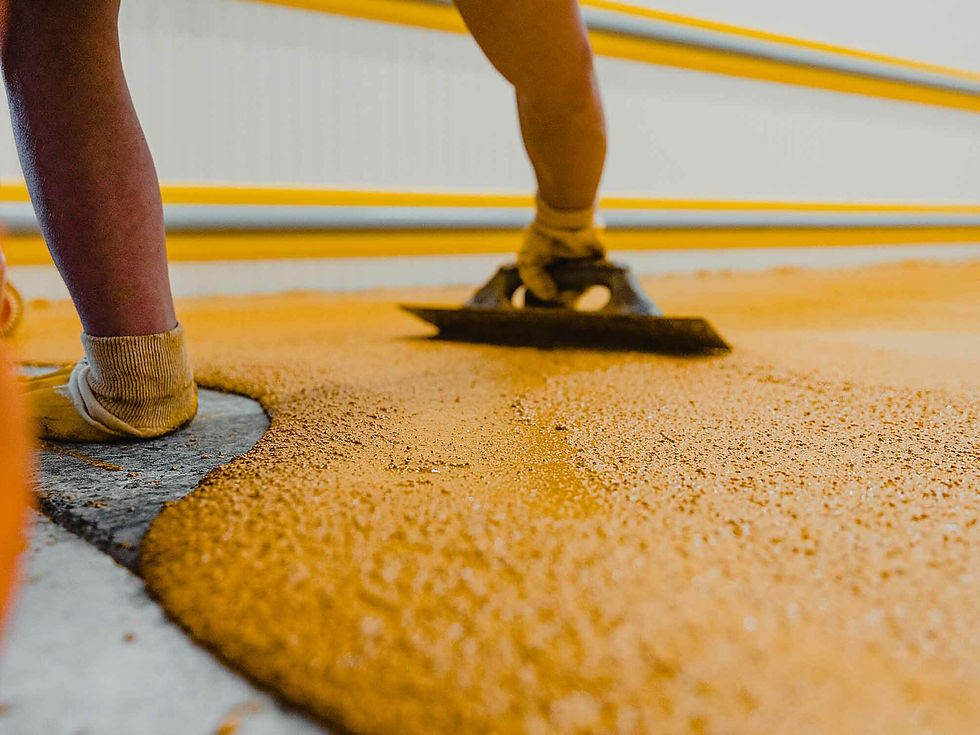Hydrostatic vs. Osmotic Pressure: How They Affect Concrete Coatings
- Amee Curtis

- Aug 22
- 2 min read

You’ve done everything right: prepped the slab, applied a top-tier coating, and the finish looked flawless—until a few weeks later when… bubbles. Blisters. Peeling.
Sound familiar?
Chances are you’ve been hit by hydrostatic or osmotic pressure—two invisible forces that are some of the most common (and most frustrating) causes of coating failure.
In this article, we’ll break down what each one is, how they work, and—most importantly—how to protect your floor system against them.
What Is Hydrostatic Pressure?
Hydrostatic pressure happens when water moves through concrete from below, usually due to:
High groundwater tables
Improper or absent vapor barriers
Moisture buildup under slabs in basements or garages
How it affects coatings:
Water vapor pushes upward through the pores of the concrete, creating pressure beneath your coating. That pressure lifts the coating, leading to:
Bubbling
Blistering
Peeling or delamination
Dark stains under the surface
🚫 Most coatings—even industrial-grade ones—cannot resist strong hydrostatic pressure without mitigation.
What Is Osmotic Pressure?
Osmotic pressure is caused by a difference in concentration (like salt or chemicals) across a semi-permeable membrane—aka your coating.
It’s more common in:
Commercial kitchens
Warehouses with salt or de-icer contamination
Food & beverage facilities
Areas with chemical washdowns or frequent mopping
How it affects coatings:
The contaminants draw water toward them, pulling moisture through the concrete. That water becomes trapped under your coating, causing:
Soft spots or discoloration
Blistering or bubbling
Loss of adhesion
🧪 Even if hydrostatic pressure is low, osmotic pressure can still cause failures due to chemical migration through the slab.
How to Prevent Moisture-Related Failures
1. Moisture Testing Is Non-Negotiable
Use:
ASTM F2170 (in-slab probes)
ASTM F1869 (calcium chloride tests)
Tramex meters for surface readings
⚠️ Don’t skip testing—even if the slab “feels dry.”
2. Use a Vapor Barrier Primer or MVB System
If readings are high, mitigate with:
Epoxy-based vapor barrier primers (some rated up to 25 lbs/1000 ft²/24 hrs)
Urethane cement underlayments that tolerate high MVER
Proper poly sheeting during new construction
3. Surface Clean & Prep Thoroughly
Remove contaminants like oils, salts, or acid residue
Open pores via mechanical grinding to improve vapor permeability
Repair cracks and joints that allow water migration
💡 Pro Tip: Pick the Right Product
Use moisture-tolerant products designed for damp or negative-side conditions.
We recommend:
Kretus MVB Epoxy: Excellent for hydrostatic mitigation
Urethane Cement Systems: Handles both hydrostatic and osmotic threats
Moisture-tolerant polyaspartics (with quick cure and high tolerance)
Conclusion
Hydrostatic and osmotic pressure might be invisible—but they’ll absolutely wreck your floor if you’re not ready for them.The good news? You don’t have to guess. With proper testing, the right primers, and support from PNW ECS, you can build floors that resist moisture and stand the test of time.
📍 Need help with testing or MVB product selection?
Come by our Sandy or Fife locations—we’ll walk you through it and help prevent your next coating failure before it happens.




Comments